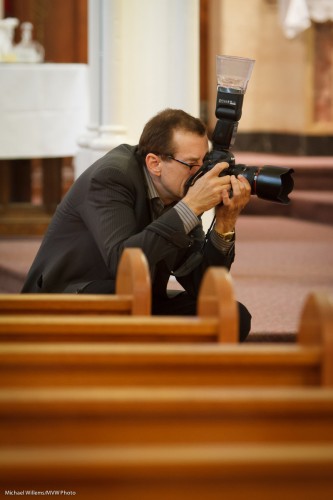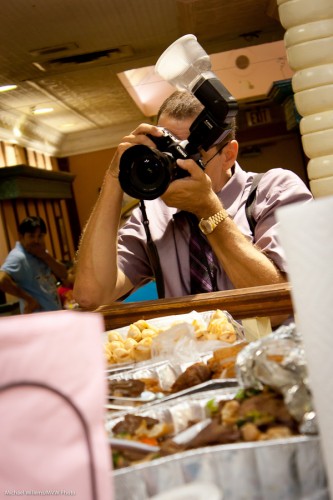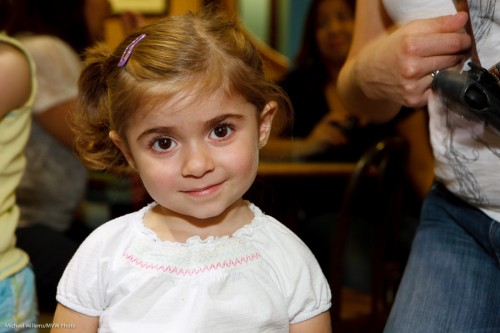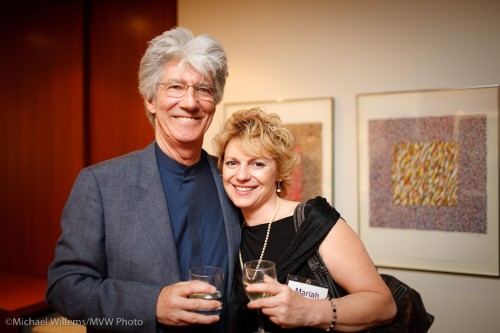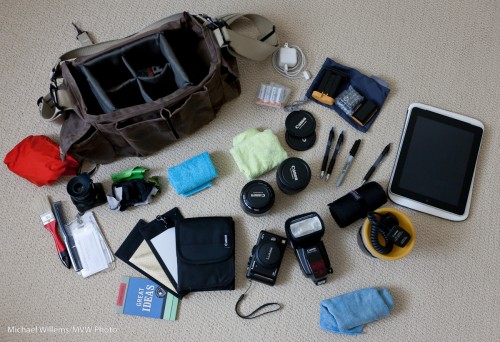Some photographers love the Gary Fong lightsphere because it throws light everywhere and makes it simple to shoot. Others hate it because it throws non-directional light, meaning “no art”.
They are both right. Every modifier has a range of situations where you use it, and a range where you do not use it. The key is not just to learn how to use a modifier, but it is to learn when to use it in the first place, and when not to.
So the Fong Lightsphere is a modifier that:
- You put on your flash
- Aim upward
- Use without the dome if you have a white ceiling; else use with the dome (the round side down).
- And which then throws the light everywhere.
And I mean everywhere. Left, right, up, down, front, behind: photons bathe the room. And reflect off anything that can reflect. Which is the Lightsphere’s benefit.
It is therefore good to use in situations where:
- It is dark.
- It is impossible to find a good bounce wall/ceiling behind you. A good wall/ceiling is almost always preferable if you can find it.
- You are looking for anything to get light into the room: you are not interested in artistically shaping light.
Like in this unedited image of the Wendel Clark restaurant I shot yesterday:

Using a Gary Fong Lightsphere to light a restaurant
Note that I was using my Gary Fong Lightsphere on a separate flash in my left hand, aimed at the ceiling. I was using TTL to fire that flash from the one on my 1Ds camera. Yes, you develop strong hands as a photographer – that, and arthritis.
That off-camera use is a key technique for me: I often like to use the Fong off-camera to give me at least a little bit of shaping.
Here’s another picture from that shoot:
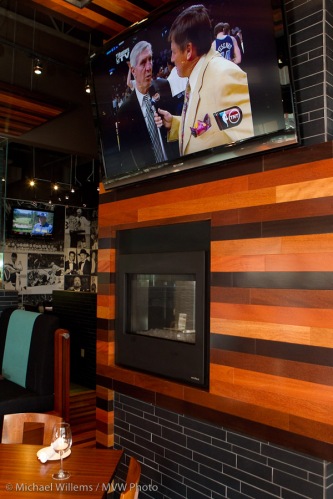
Using a Lightsphere
So while as you all know I normally much prefer the Honl lightshapers – they allow me artistic control over where the light goes – “trendy venues” is a prime case where I use the Fong Lightsphere.Because Trendy Venues have no simple walls or ceilings, and those that there are tend to be black. So you need to bounce those photons off anything that wiull reflect them, anywhere in the room. Enter the Fong Thing.
What does the Fong Thing look like: Here’s me with one on the camera.

